Set-pieces can be the difference between a win, loss or draw, and in the modern game where teams are looking for whatever marginal gains they can, it is still surprising there are plenty of top-level teams employing basic and ineffective routines from dead-ball situations that have led to little in the way of goals. There are teams out there employing set-piece coaches and/or using innovative ideas from these situations. Whilst teams have been rightly praised for being effective from corners, less noise is made about those teams that regularly turn free-kicks in seemingly moderate-to-low danger areas, into goalscoring opportunities.
This tactical analysis will take a look at some of the tactics that some of Europe’s most innovative set-piece sides are employing to gain an advantage over their opponents. This analysis breaks down some of the key concepts, from using decoys to prevent offsides from being an issue to using variety to set up “trick plays” — and even a variation on archetypal free-kick routines from specific areas.
This tactical theory article will look at examples from a number of clubs to highlight their trends and suggest some key takeaways that may benefit other teams if they sought to employ these techniques.
Newcastle
Eddie Howe and his coaching staff grew a reputation for set-piece innovation in their time with Bournemouth. In fact, in Bournemouth’s last season in the Premier League, their corners and free-kicks were consistently one of their most potent attacking options.
Whilst he has only been at Newcastle for a short time, and they have had mixed success thus far with set-pieces, there are still some smart and innovative approaches being seen at St James’ Park.
Specifically, Newcastle are excellent at forcing the opposition backline to drop off early as they anticipate the free-kick to be taken before it actually is.
Howe consistently places two players around the ball, providing a potential outswinger and inswinger option, ensuring the opposition defence aren’t sure what to expect from the delivery.
He also regularly uses decoys/dummy runs to force the defence to drop. This isn’t anything ground-breaking, but Howe employs real theatricality in this approach and often double-bluffs with this approach.
Below we can see that Matt Targett initially runs over the ball, while the Wolves defence expects this and doesn’t budge.
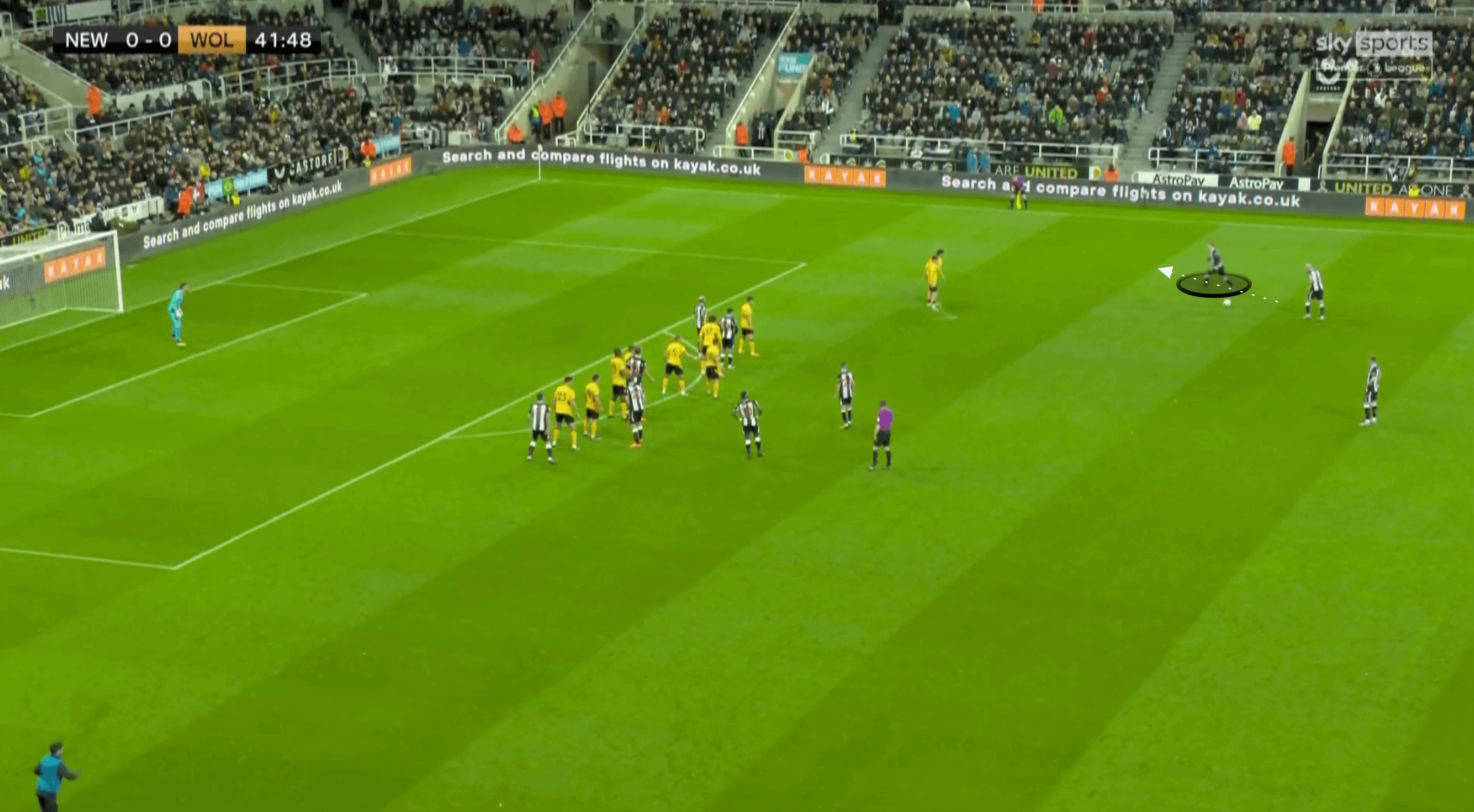
Shelvey then steps forward to take it, and this time the defence drop with Shelvey looking now much more likely to take the set-piece. However, he dummies, checking himself before striking the ball, and Targett doubles back on himself and now whips the ball into the area. We can see that several of the Wolves defenders bite on Shelvey’s dummy, and in doing so prevent the offside line from doing its job.
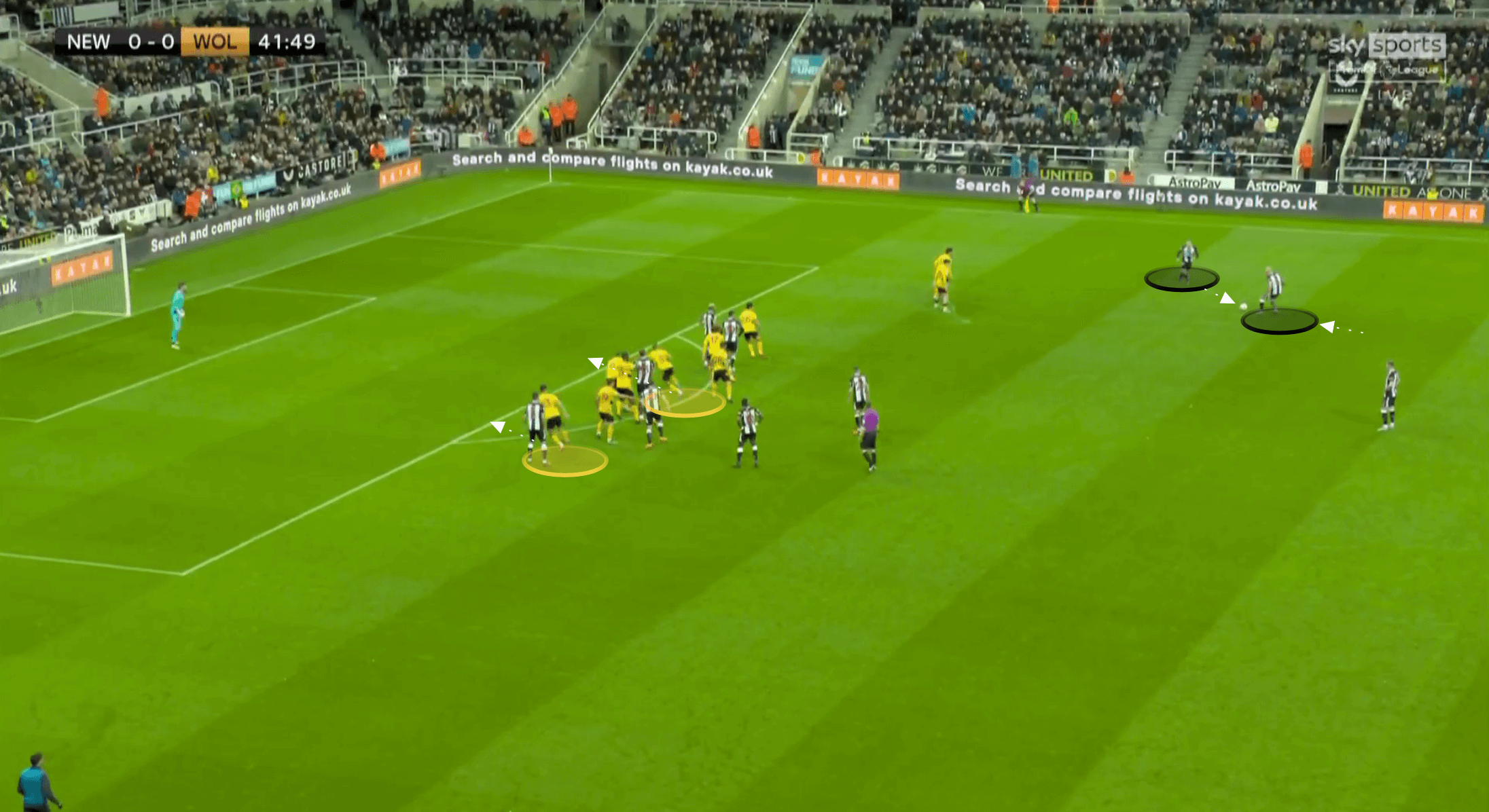
We can see a similar pattern in the following image, against Tottenham. Once more, Targett steps forward, but similar to Shelvey in the previous example, checks himself before striking the ball.
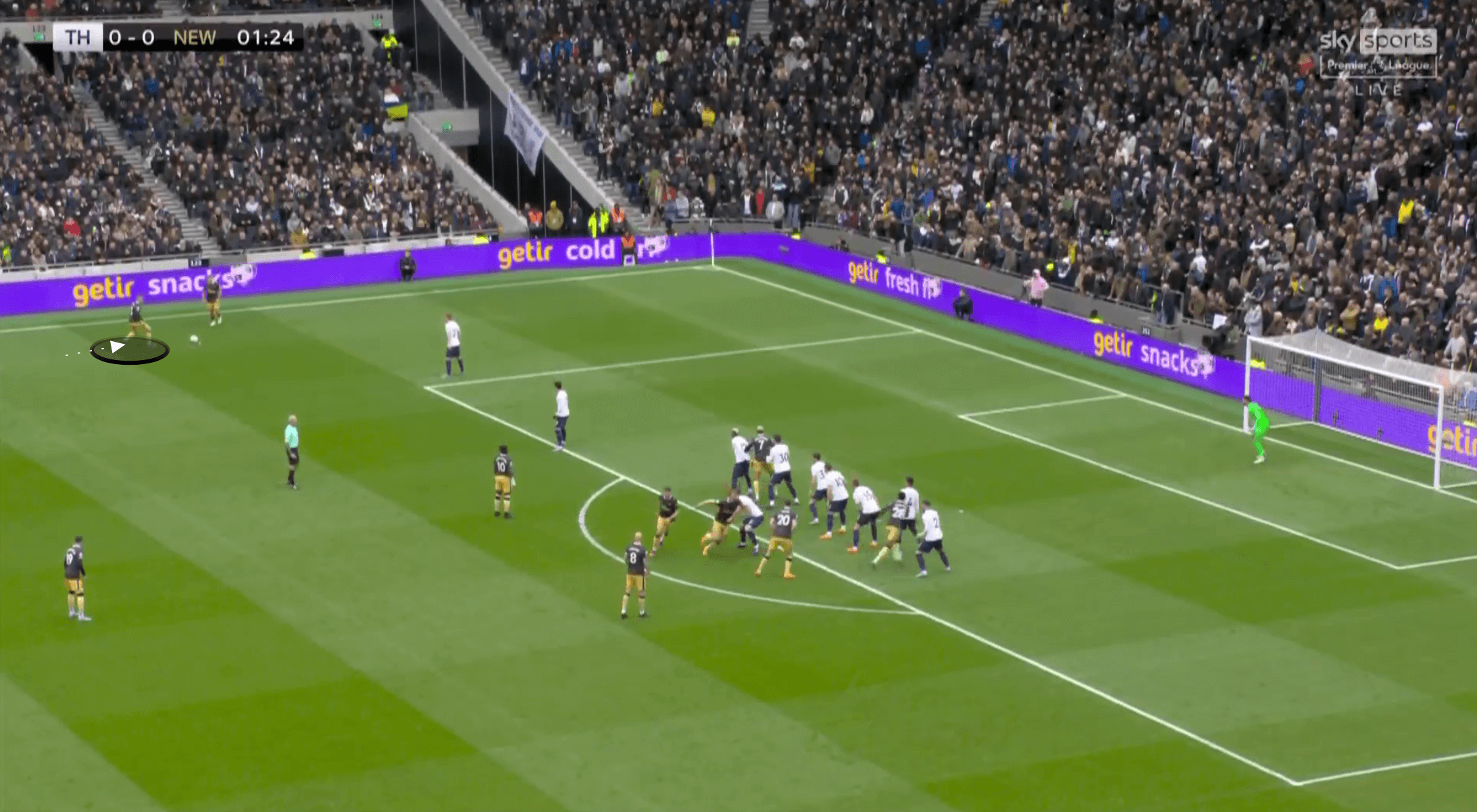
This time, the second player moves towards the ball but runs over it. It is a simple dummy, but as we can see in the next picture, Tottenham’s defence drops several yards as a result, before Targett then takes the free-kick again.
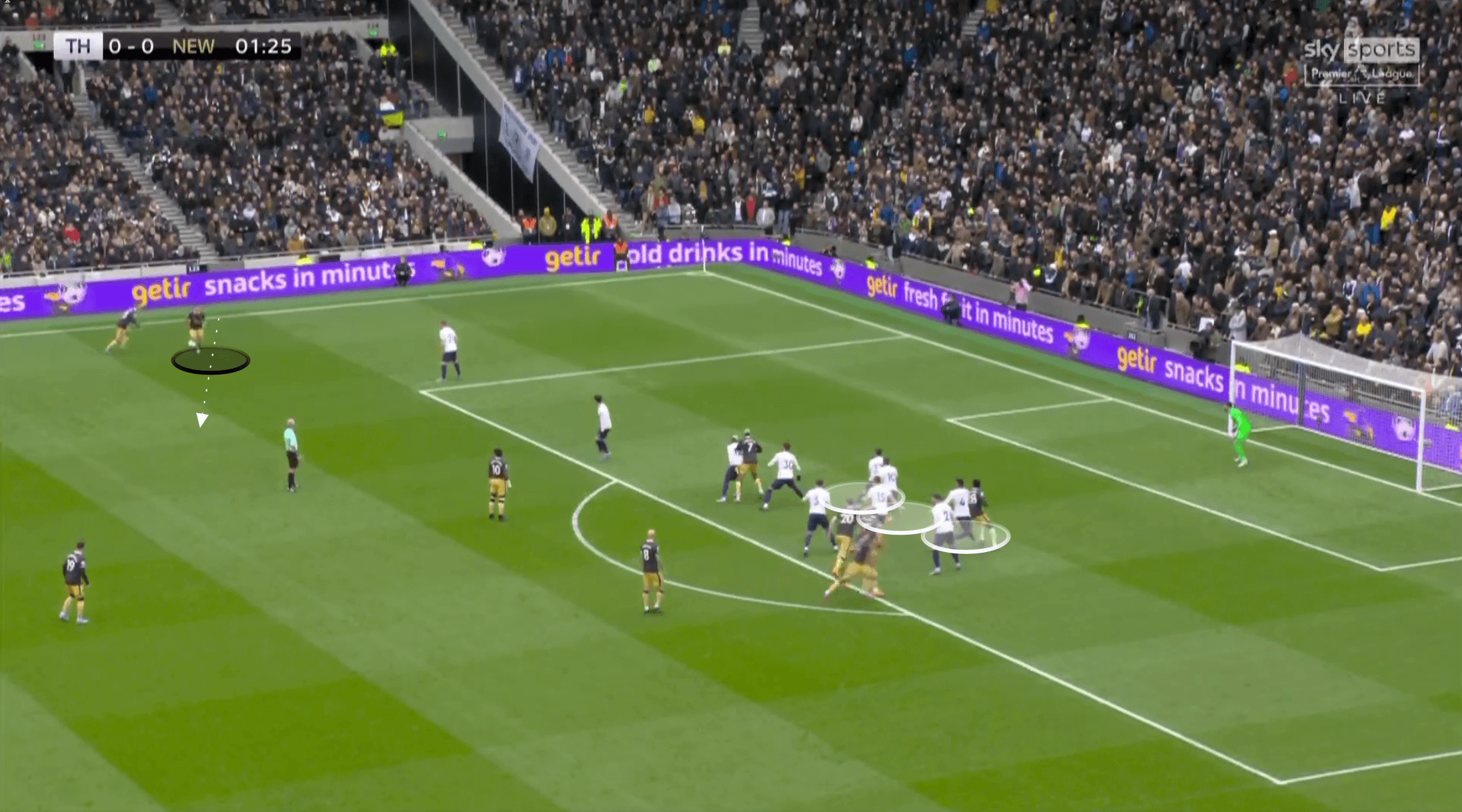
Bournemouth
Bournemouth have continued to use set-pieces effectively even following Howe’s spell at the club. They have consistently been dangerous from corners and free-kicks this season and have been regularly productive in scoring through either of these dead-ball situations.
Bournemouth regularly play for a simple but highly effective routine. Philip Billing frequently sits south of a cluster of tall players positioned towards the far side. His teammates in this area generally seek to act as blockers, or at the very least just provide a presence that gives Billing enough space to loop his run in behind.
We can see him doing this in the following image, looping behind this cluster of players in order to attack the overhit long ball played beyond this back post area.

Due to the traffic created by his teammates and the timing of his run, Billing is then often able to attack the ball without being tightly marked. He then looks to simply head the ball across goal, where many of his teammates are expecting the ball to arrive, and are ready to pounce on this ball played across the goal.
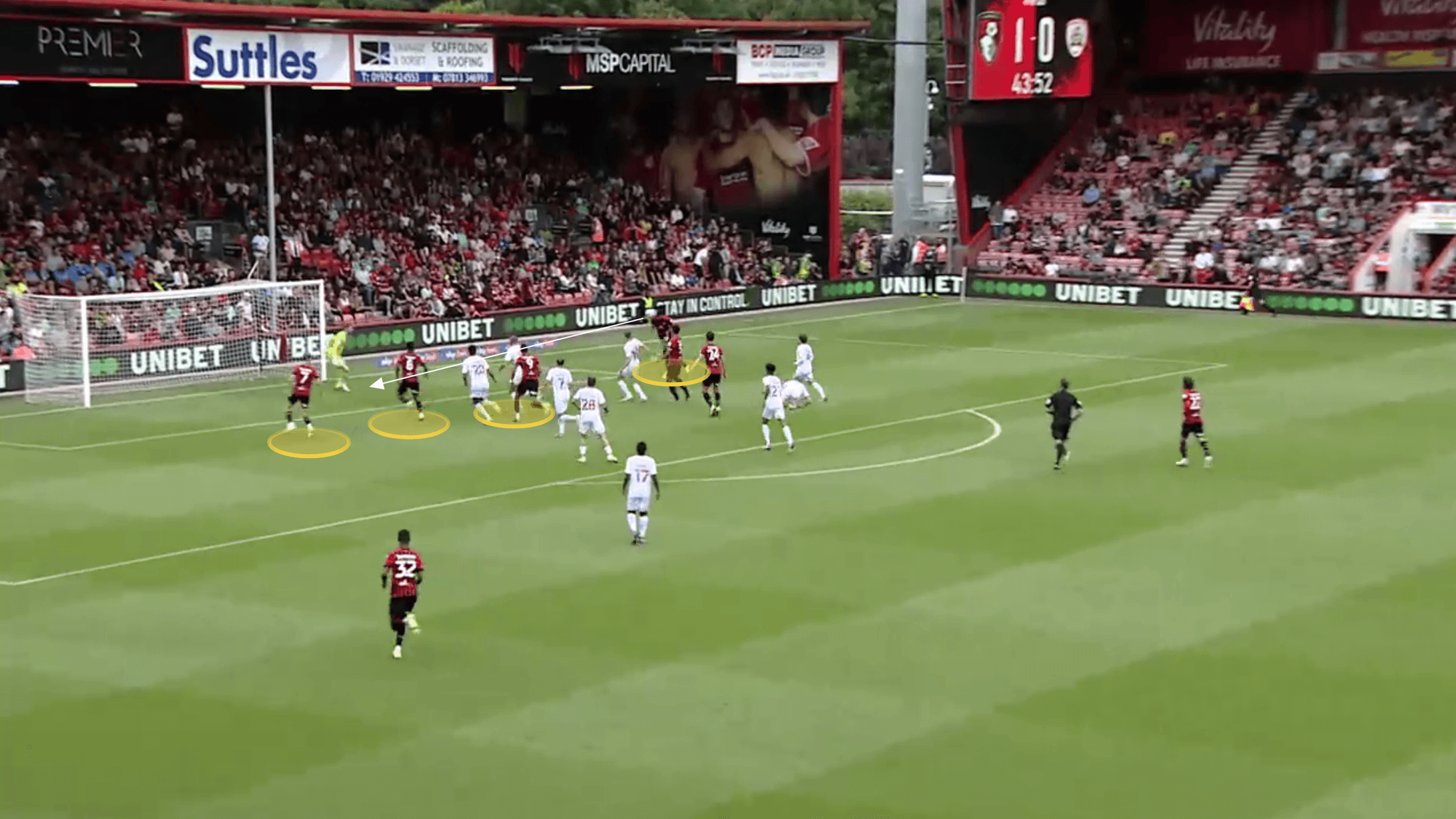
This is a very simple set-piece routine, but when executed correctly, it is highly effective.
Roma
José Mourinho’s Roma are one of the most potent set-piece sides in Serie A — even in Europe. They also use this same routine that Bournemouth use, but this time with ex-Manchester United man Chris Smalling as the focal point.
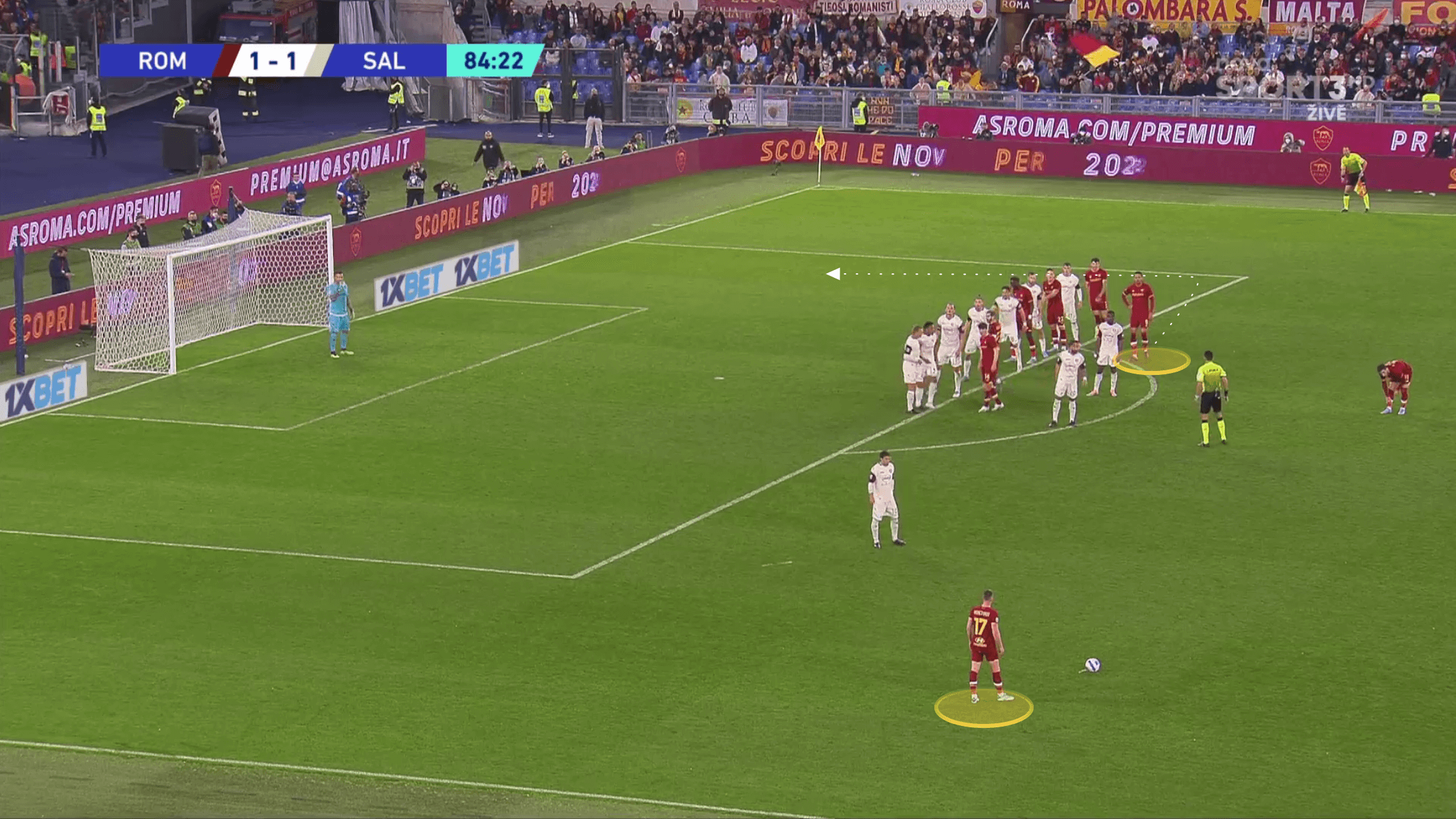
Smalling may look to head the ball back across goal, but often finds enough space where he can shoot himself, either through a header or volley; he has been successful with this approach in 2021/22.
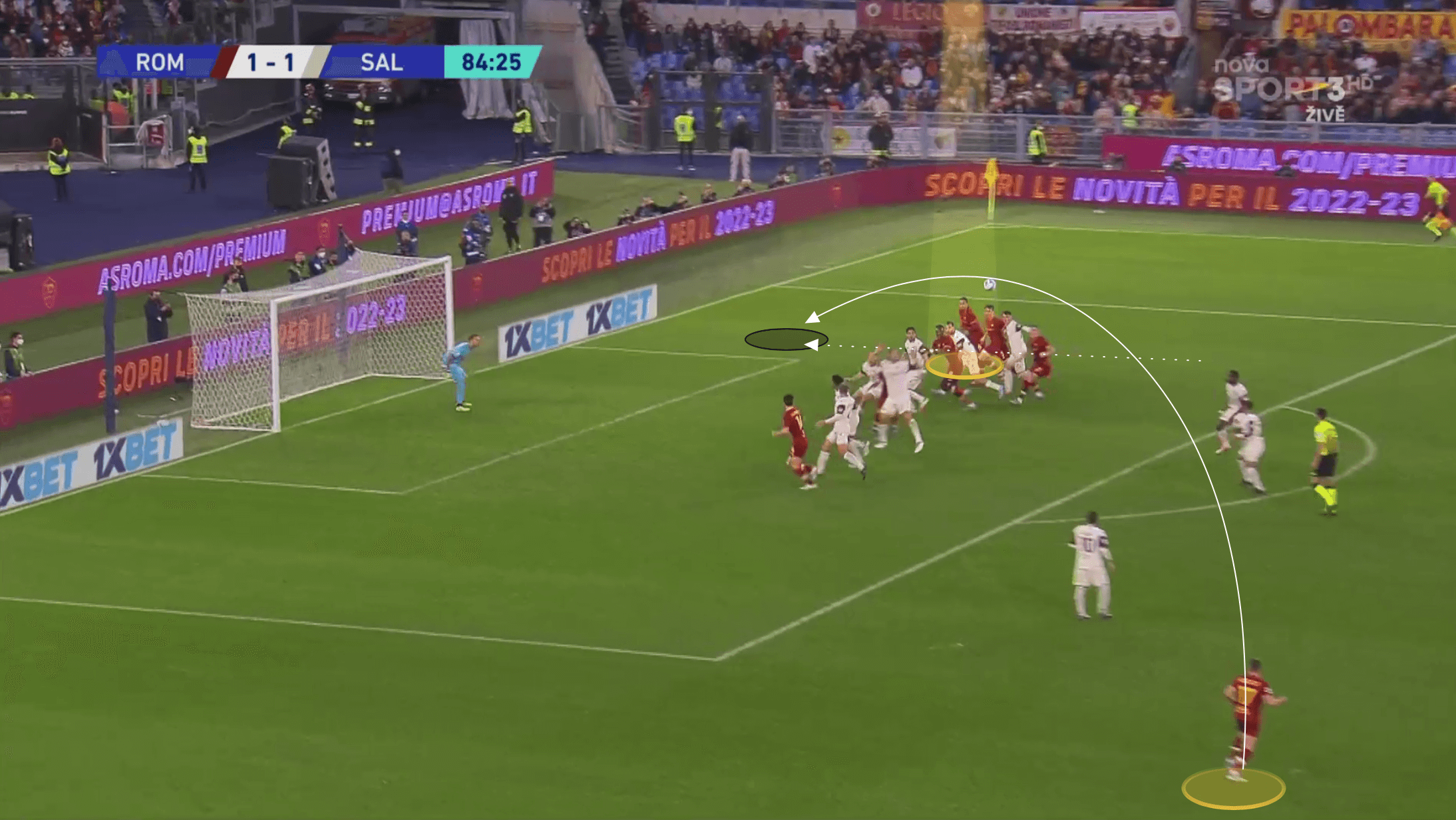
However, Roma have used this routine to create other opportunities.
With the opposition expecting them to strike the ball towards the far post Roma will use this to create unexpected opportunities elsewhere. Once more, theatrics are important to sell this, and we see free-kick taker Lorenzo Pellegrini pointing towards Smalling at the back post in the following image.
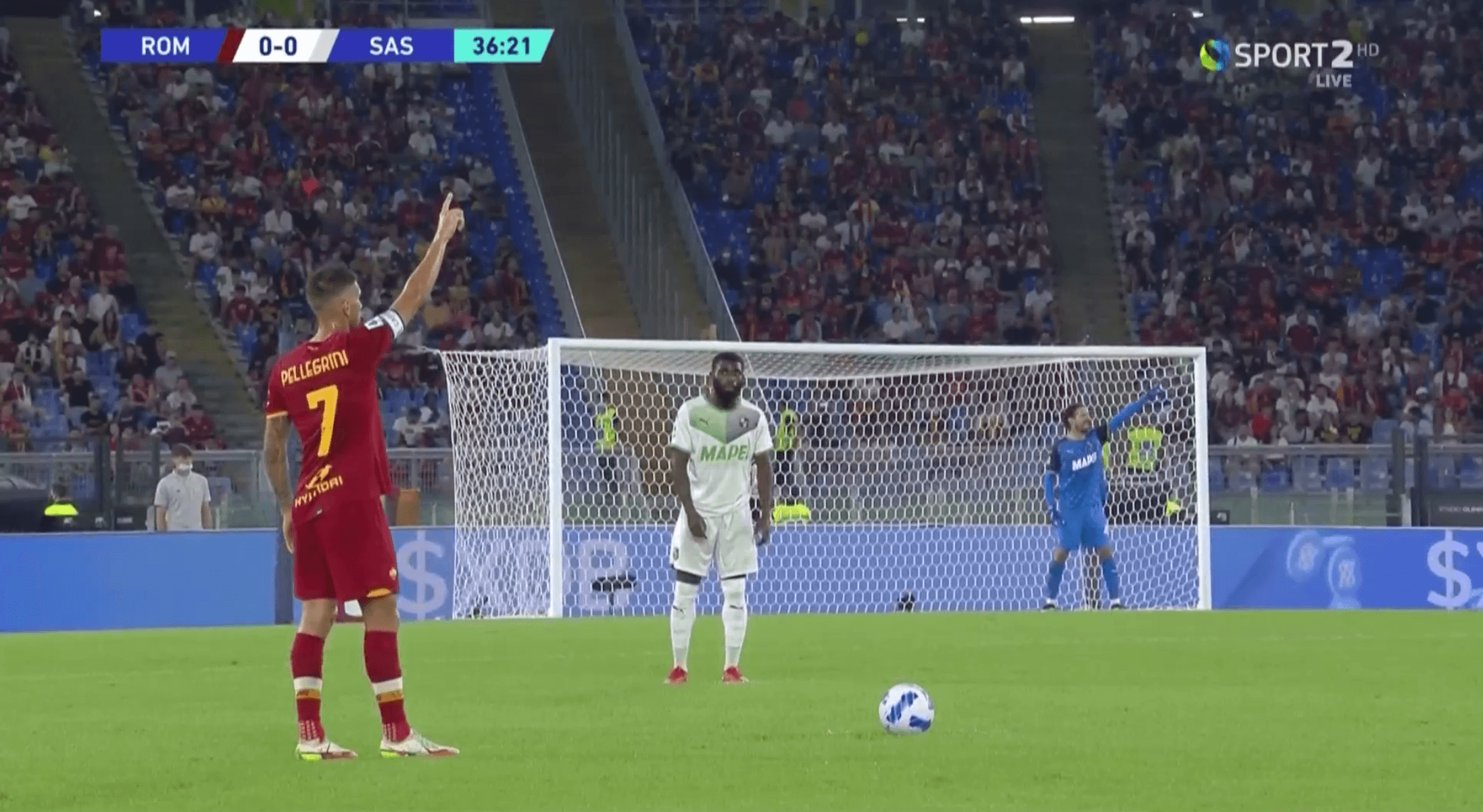
Smalling sells this as well, looking to time his run as Pellegrini steps towards the ball. However, instead of playing the far-post ball — and we can see how many Sassuolo defenders are committed to protecting this area — Pellegrini instead slides this towards the front post for the highlighted attacker to run onto.
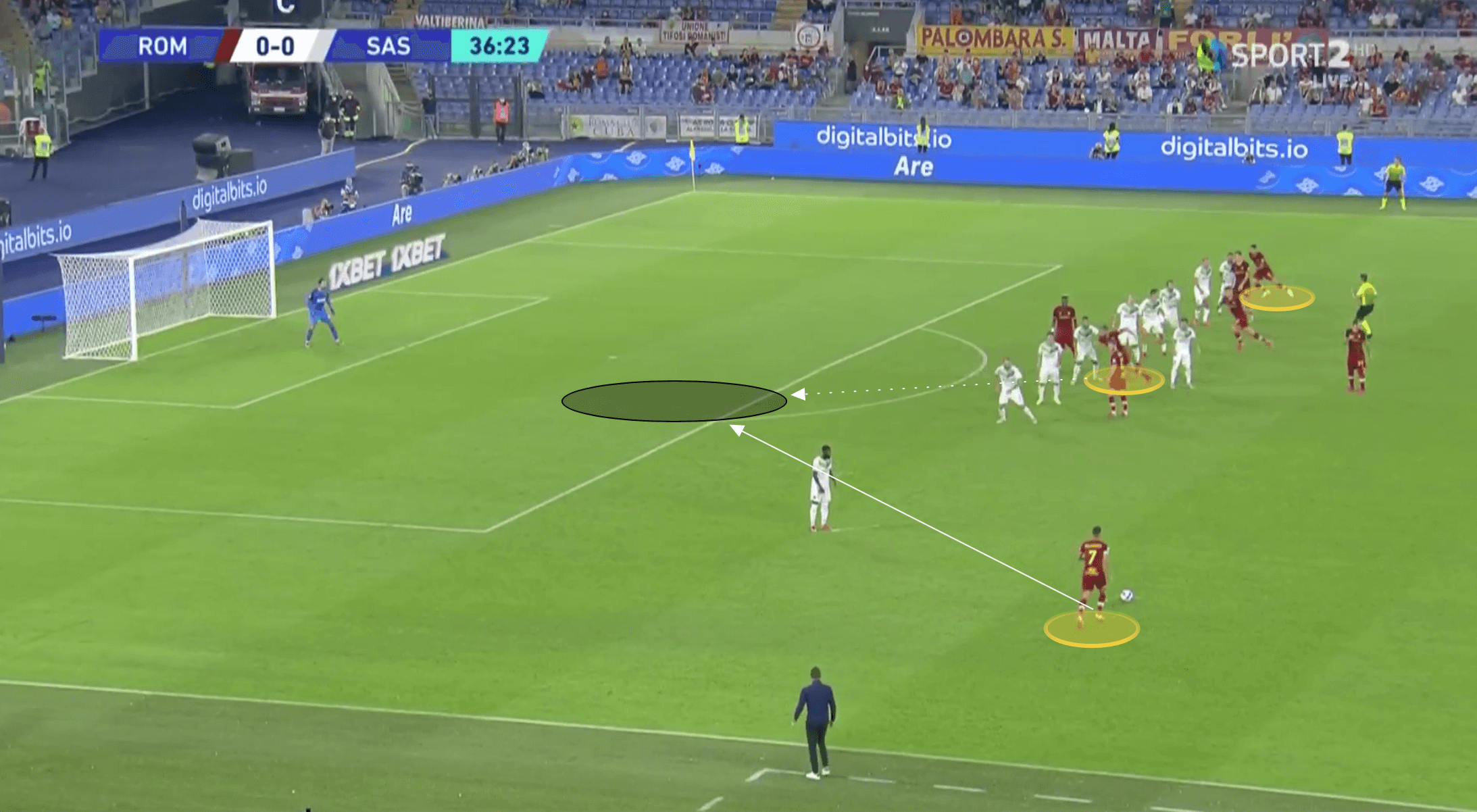
Inter
There is a recurring theme throughout many of these set-piece routines: selling the idea to the opposition that you are going to do something different with the free kick before you do it.
Inter also have used this on several of their set-pieces this season. Alexis Sánchez stands on the ball whilst Alessandro Bastoni, positioned out wide in space, has his hands on his hips, not watching Sánchez, therefore implying he isn’t going to impact this play. There is another wide player to the right, suggesting that either wing could be an option as well.
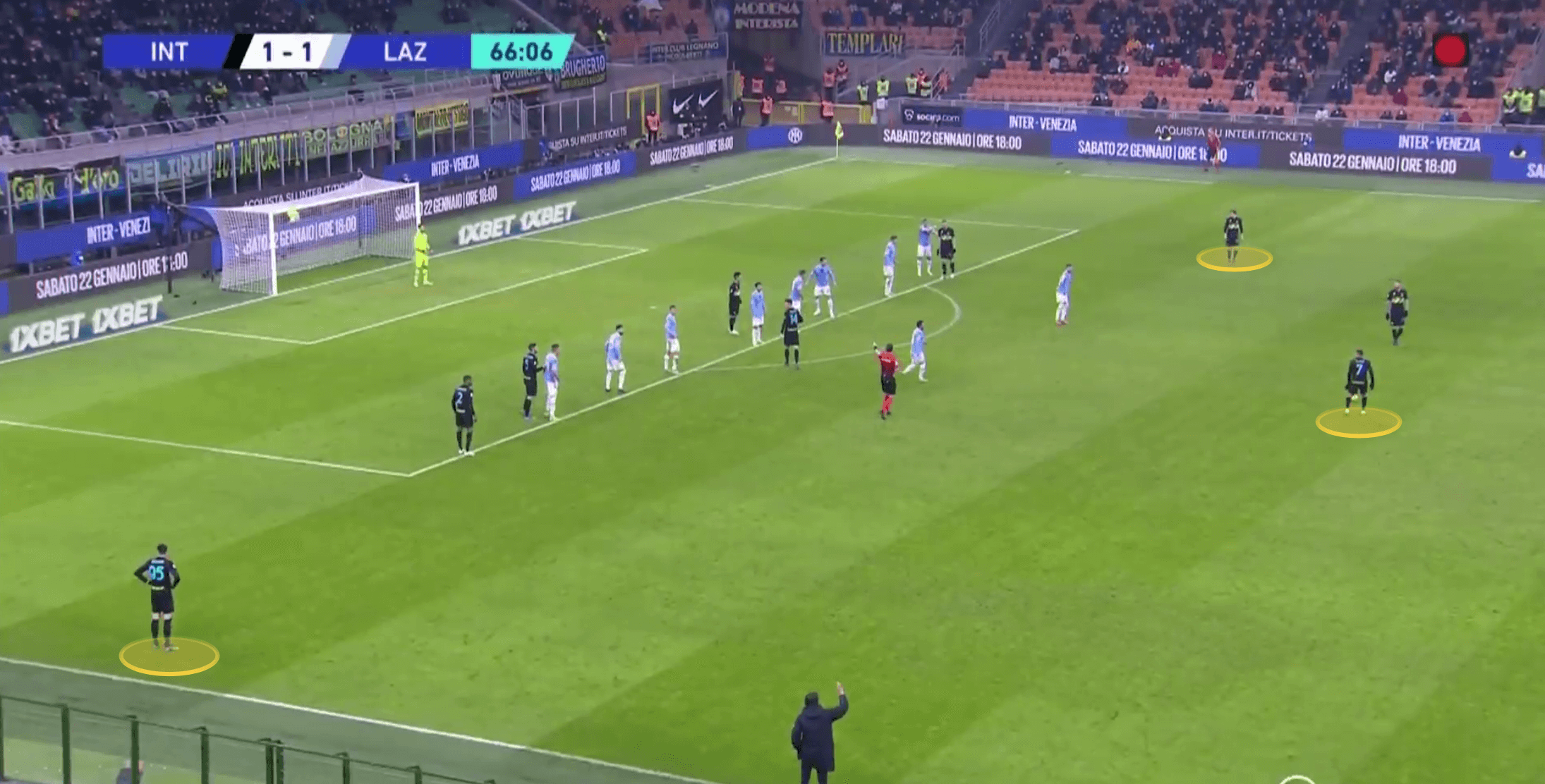
Sánchez even goes as far to show frustration with the lack of movement in front of him, in the attempt to make Lazio’s defence think he isn’t going to take the free kick just yet.
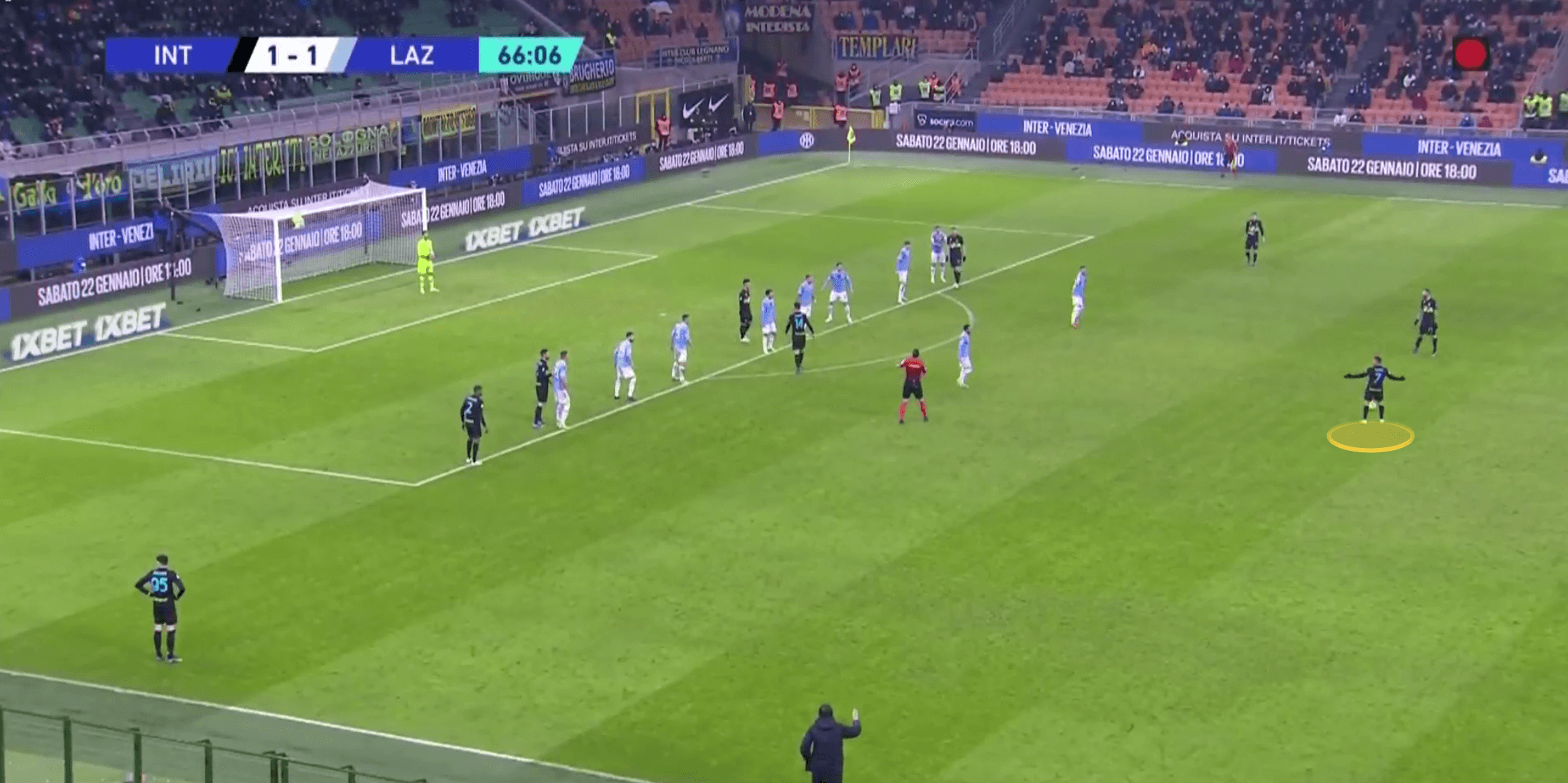
However, immediately after doing this Sánchez then quickly runs up to the ball, still disguising where he is about to pass it. He angles his body as if about to strike the ball into the area, but instead plays it out wide to Bastoni.
The aim of this set piece is to hit Milan Skriniar, positioned towards the back post of the attacking group. The highlighted area is a small corridor of space that Inter will look to widen in the subsequent moments to provide space for Skriniar to attack.
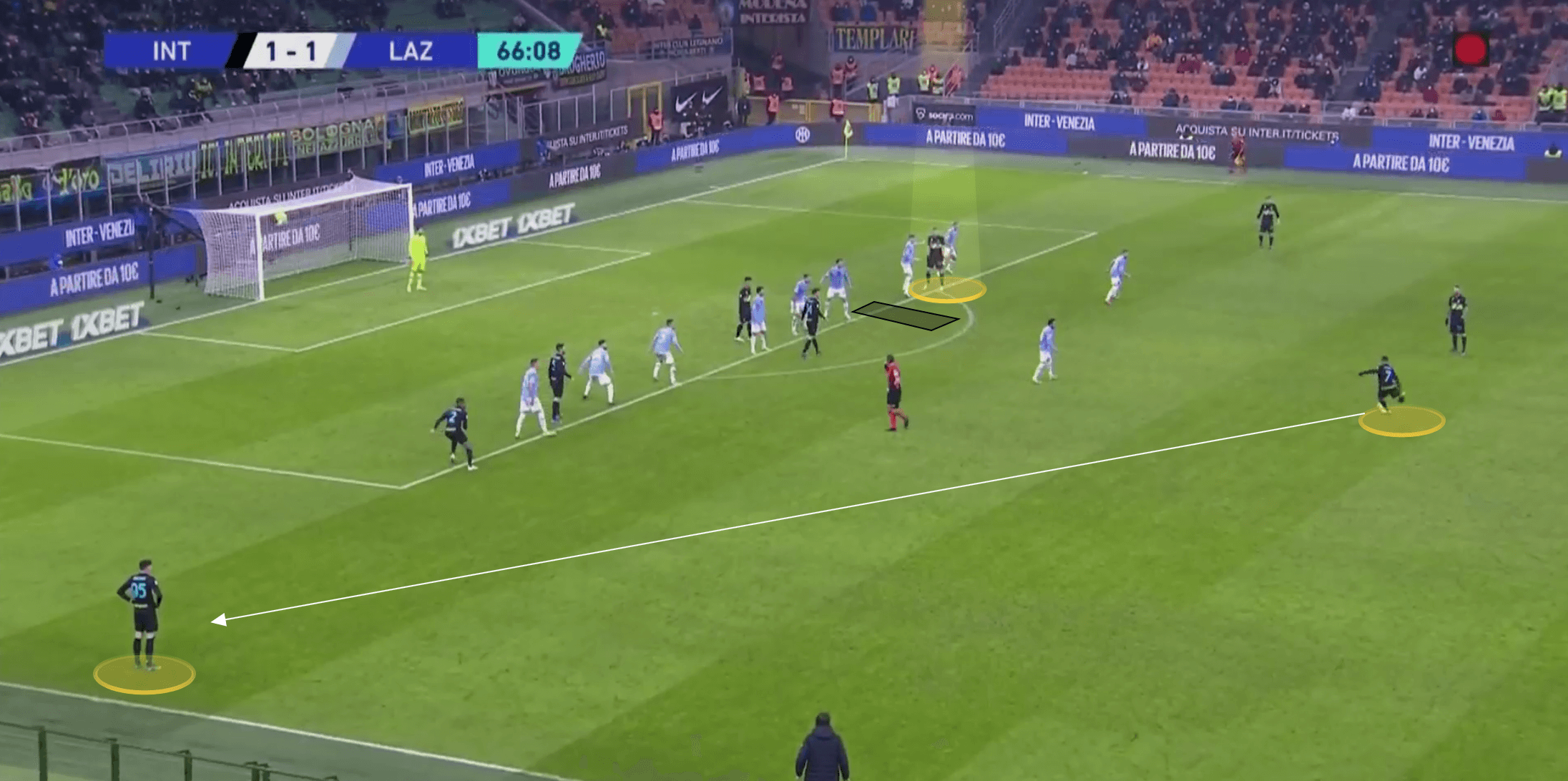
The adjacent attacker darts towards the front post area, dragging the Lazio defenders with him, and leaving the space for Skriniar to move into as Bastoni whips the ball into the area.
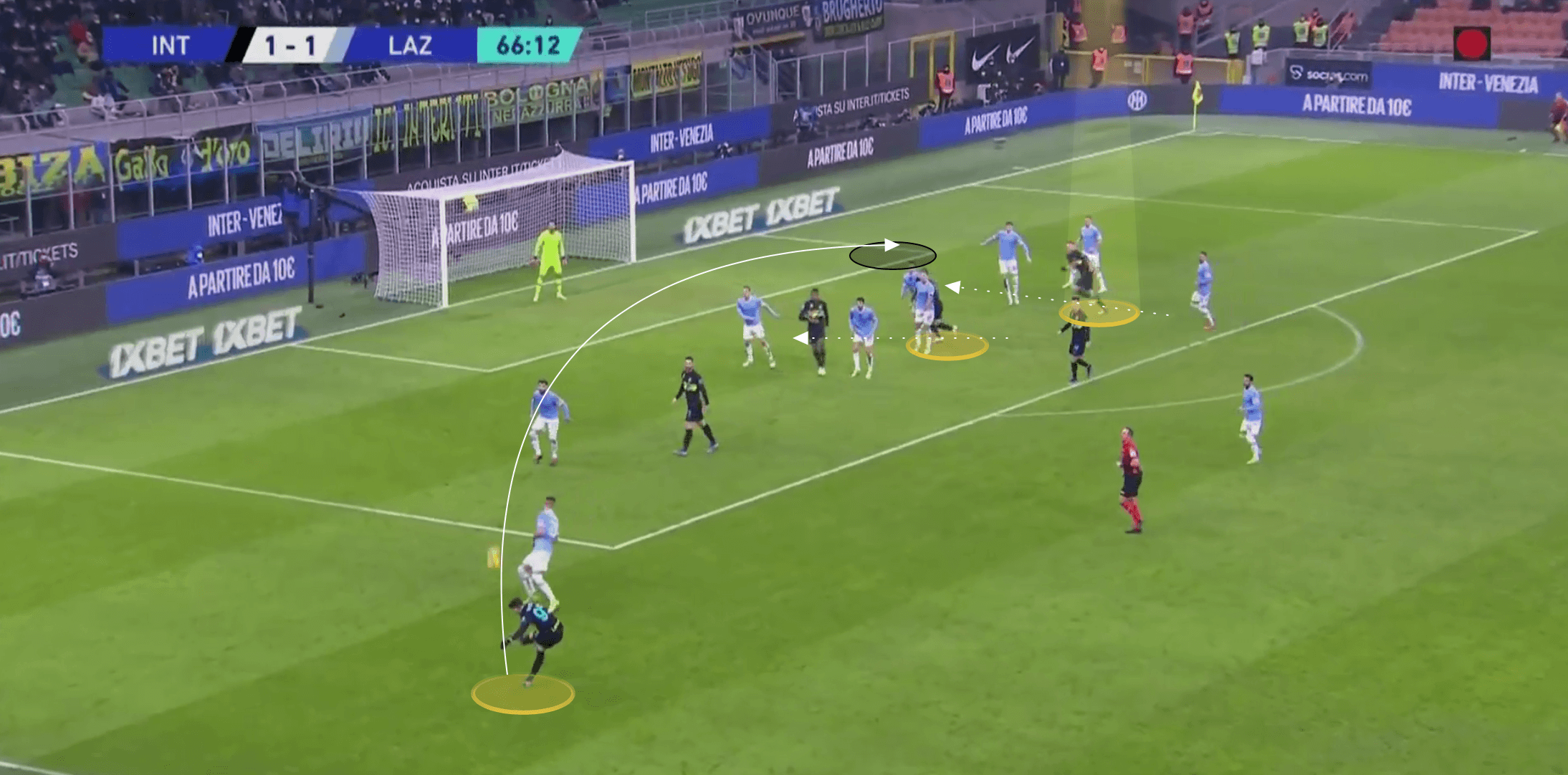
Köln / Eintracht Frankfurt / West Ham
These two Bundesliga teams, along with West Ham, have had success by finding the front post from positions where most teams would generally cross the ball towards the back post.
They look to pack the back post, just as we’ve seen Roma, Inter, and Bournemouth have all done in the previous examples shown throughout this analysis.
Below we can see Köln accessing this front post space. Instead of hanging the ball, the free-kick is a driven, lower trajectory pass over the top of the backline. This pass can catch defences off guard, and it requires one of the attackers to simply get in front of the defence. Given the ball’s lower trajectory it is a foot race, rather than a contested aerial duel that comes with lofting the ball towards the back post.
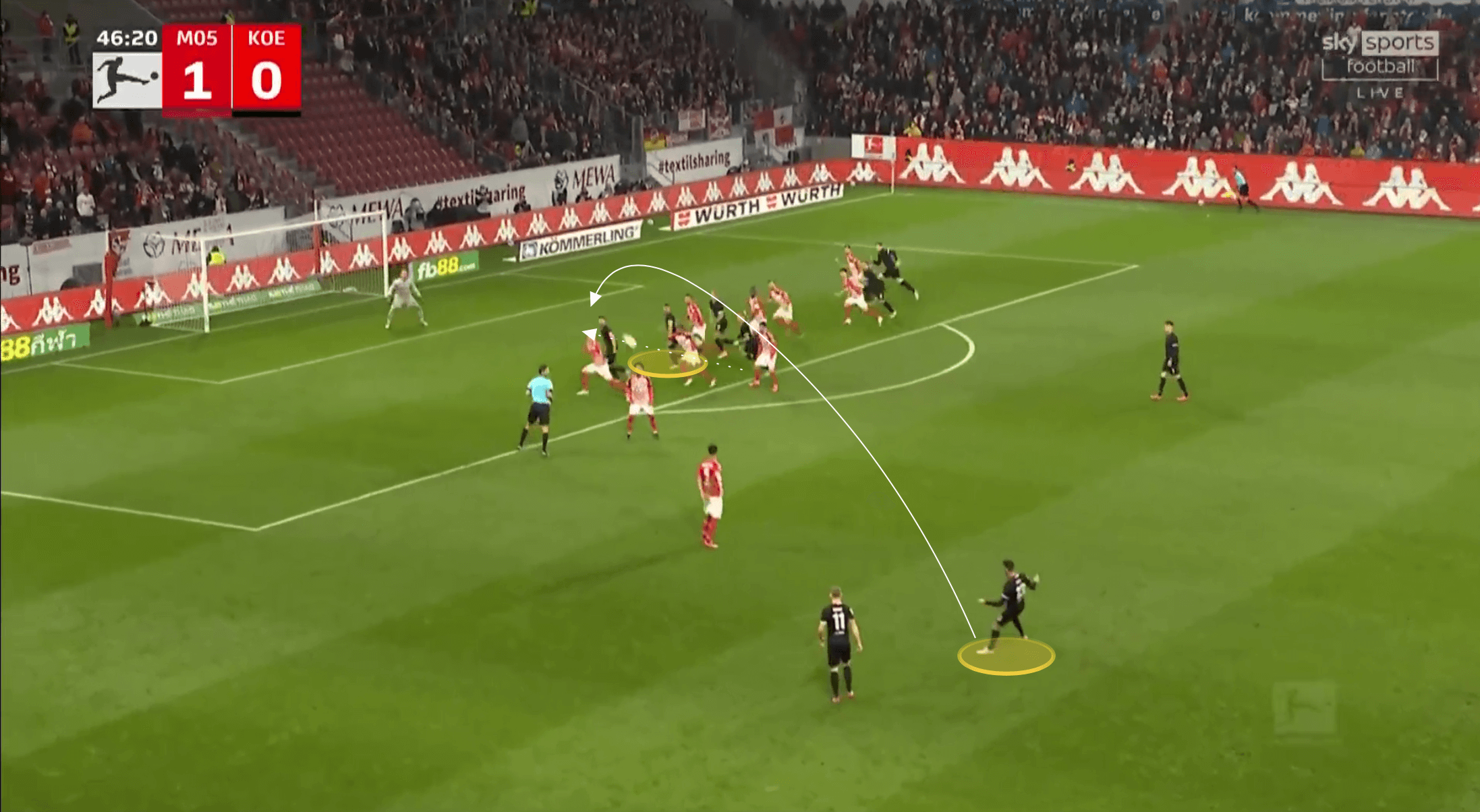
We can see Eintracht Frankfurt achieving success with this approach over the next two images. Whilst they have two players over the ball, like Newcastle, and a cluster of players towards the back post, Kostić whips the ball towards the penalty spot. Frankfurt purposefully leave the front post space open, providing room for the attacker, Rafael Santos Borré, to attack this space.
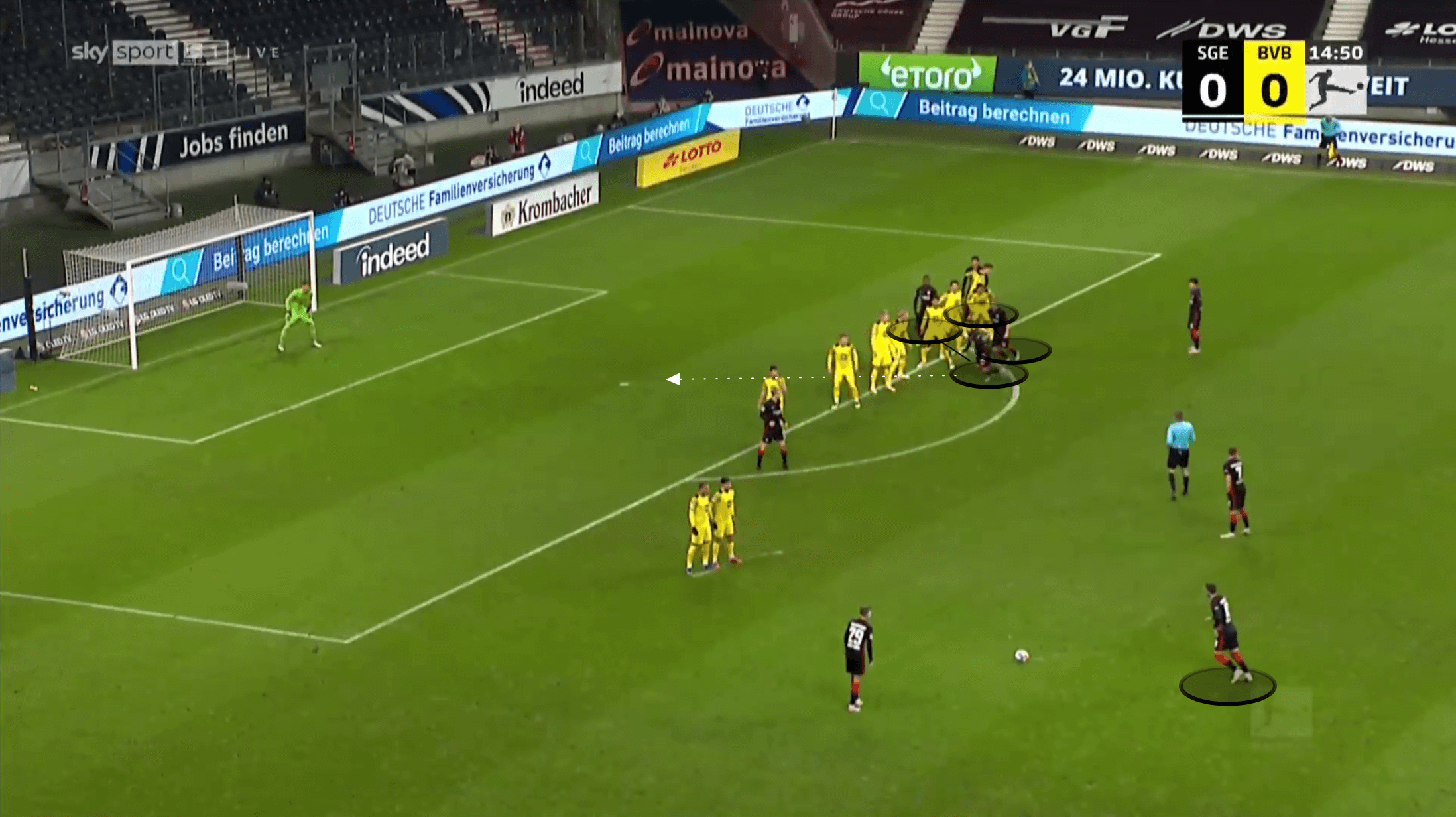
Again, it becomes a foot race, and with Dortmund failing to deal with the low trajectory cross, Borré is able to steal in front of his marker and get to the cross first, before finishing.
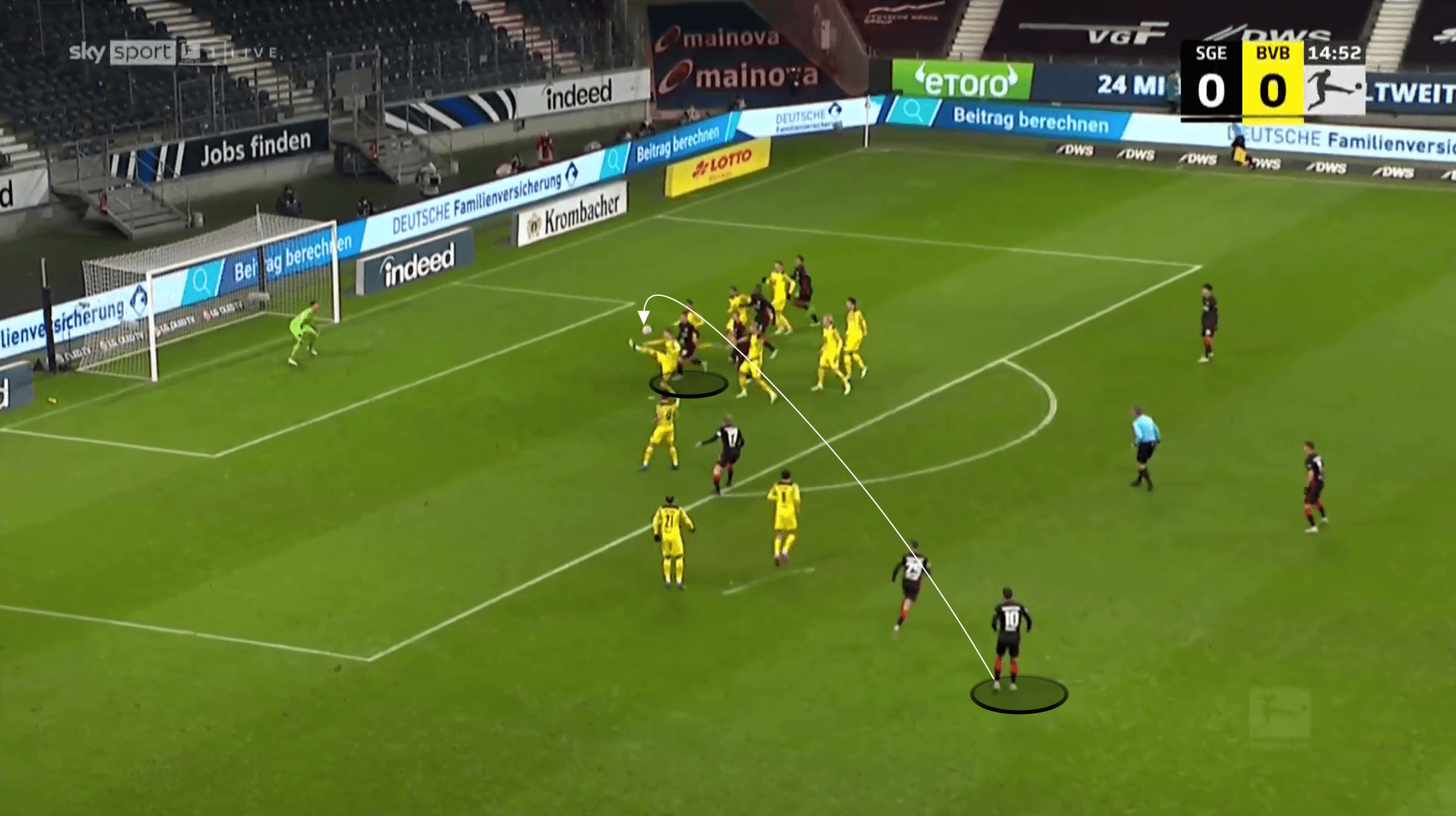
West Ham have been consistently dangerous from both corners and free kicks in the time David Moyes has spent with the club. Craig Dawson, Tomáš Souček and the currently injured Angelo Ogbonna all represent very dangerous aerial options from such set-pieces, and West Ham play to this advantage.
Dawson has popped up with some important goals from set-pieces, most recently against Lyon in the Europa League quarter-finals. Dawson is often used as the focal point for free-kicks, and we can see from this clever routine against Newcastle, again, how effective this front-post delivery can be.
Just like the other teams, West Ham pack the far post but leave a clear channel for Dawson to attack.
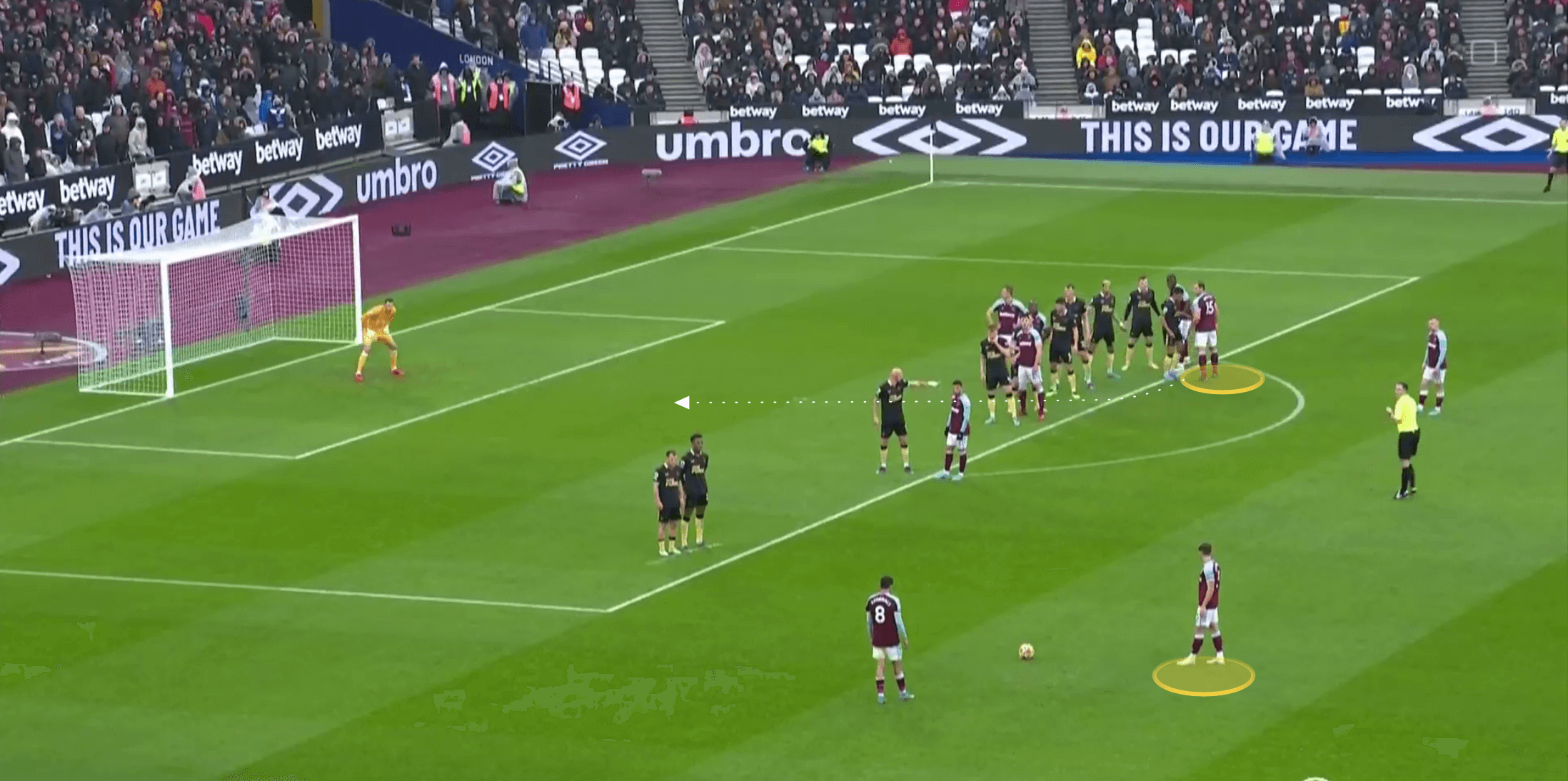
The centre-back runs through this space and is able to get on the end of the drive, front-post cross from left-back Aaron Cresswell.
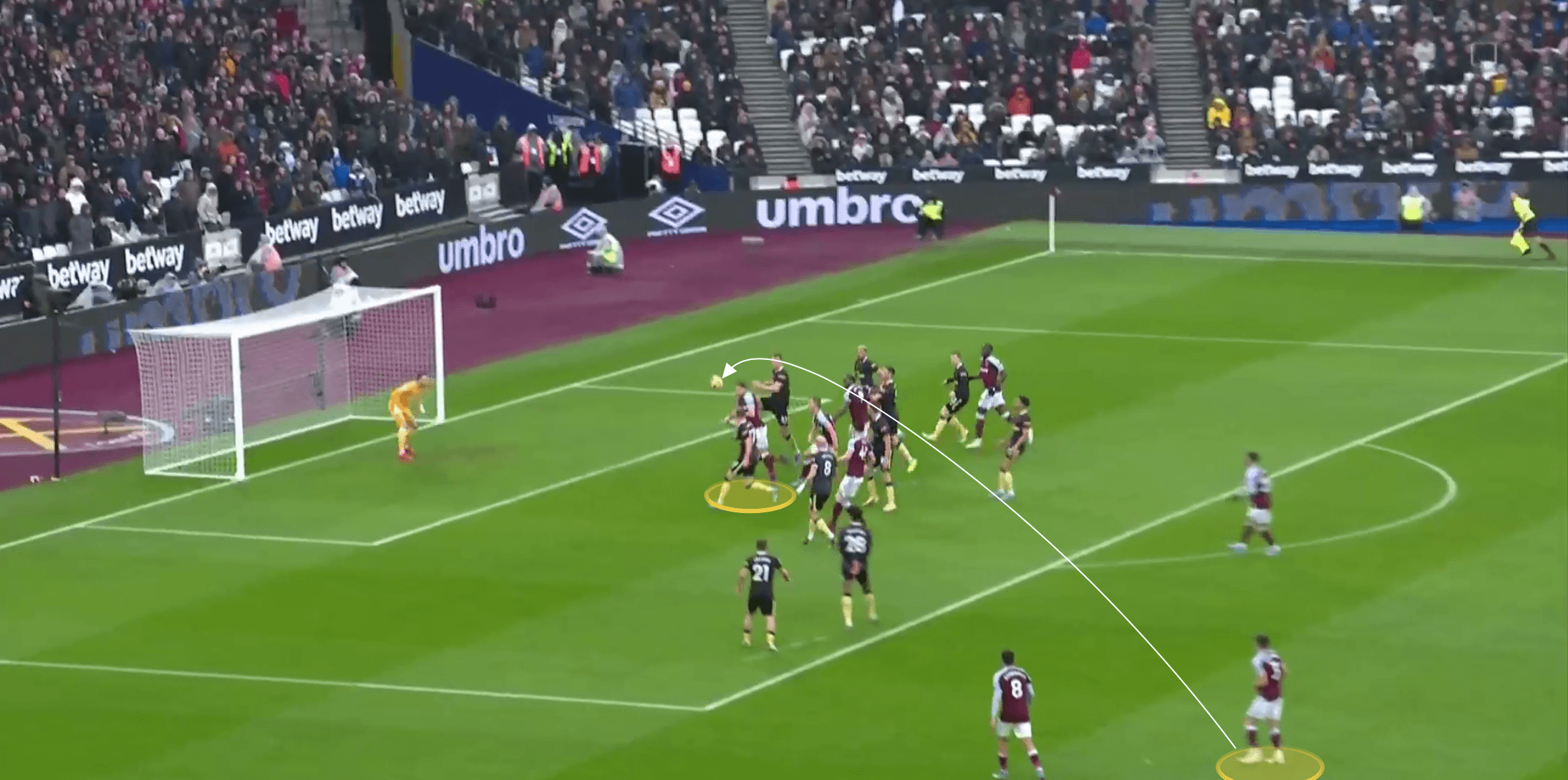
Conclusion
This article has looked to highlight some different ideas and tactics being used in free-kick routines from teams across Europe, and of course, only highlights a handful of examples. However, these tactics are all effective in creating space, mismatches in goalscoring positions, or open shots.
Whilst theatrics are a facet seen throughout these free-kicks, the creators of these routines are clearly thinking about how to remove the vast number of players from such moments of the game. When taking such free kicks there are often 15 or 16 players in the vicinity of the ball, yet the majority of these free kicks aim to either find a player in space, create 1v1 opportunities, or at the very least zone in on a specific area to remove the majority of players from the equation. This can be achieved through the delivery, the runs of the players, and the purposeful spacing in the set-up of the players as well.

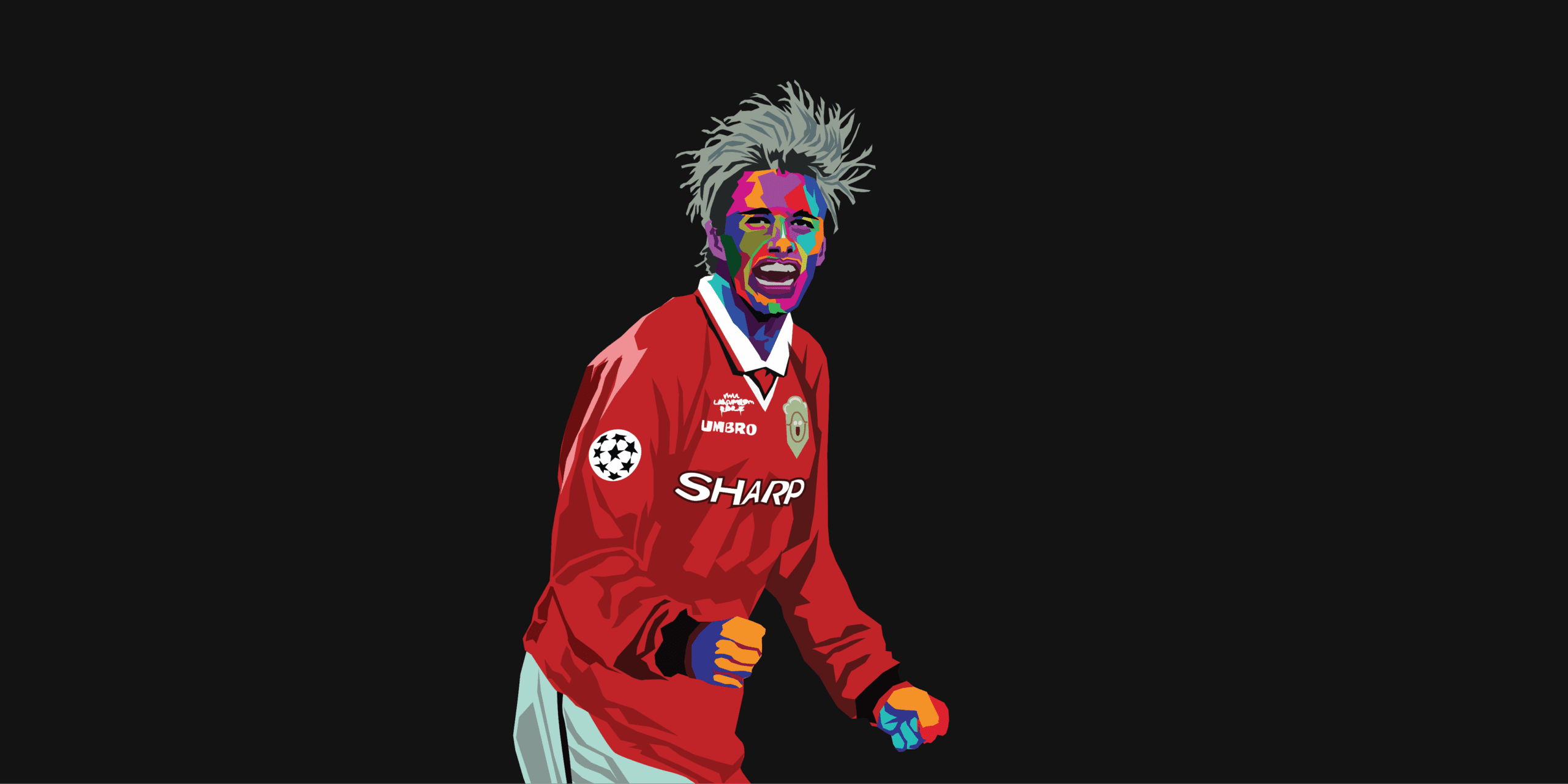



Comments